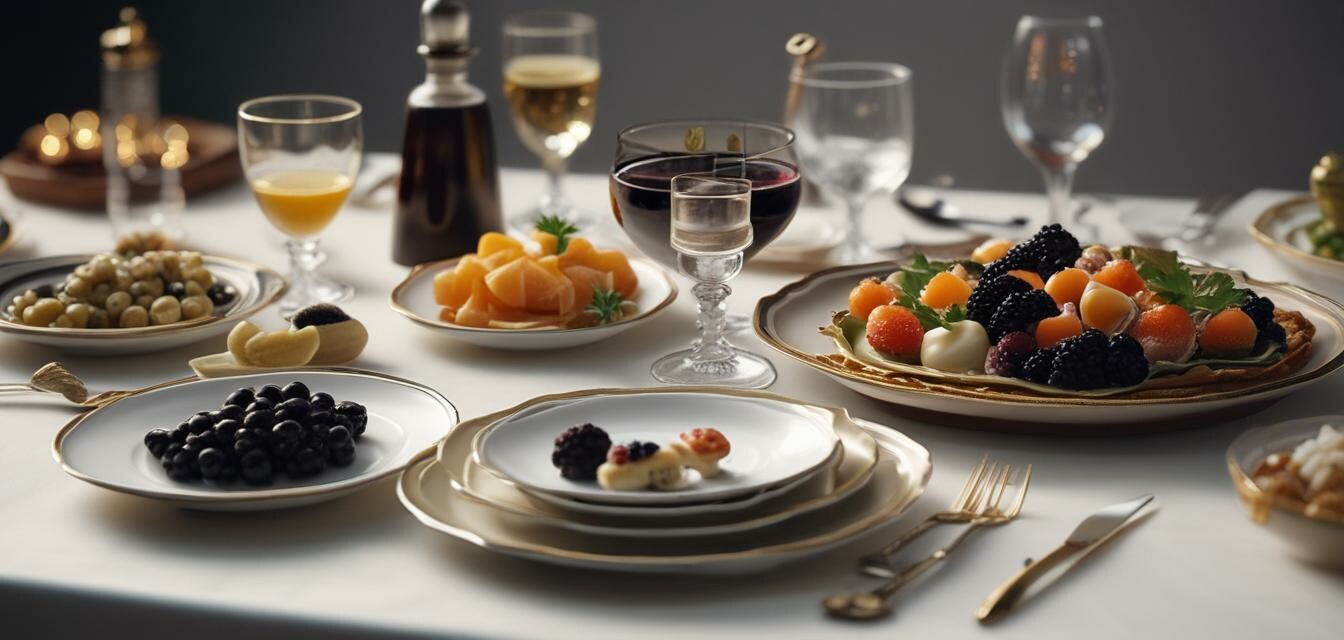
Introduction to Caviar
Caviar, often referred to as the “food of the gods,” has a rich history and captivates the culinary world with its unique flavors and textures. In this guide, we explore the history, types, and origins of this gourmet delicacy, making it an essential read for caviar enthusiasts and curious newcomers alike.
Key Takeaways
- Caviar is primarily derived from sturgeon eggs, and there are various types depending on the sturgeon species.
- The production of caviar is a meticulous process, taking many years for the fish to mature.
- Caviar is often enjoyed with specific accompaniments and serving accessories that enhance its taste.
- Pairing caviar with the right wine or spirit can elevate its luxurious experience.
History of Caviar
Caviar has been appreciated for centuries, with its roots tracing back to ancient Persia, where it was consumed by kings and nobility. The tradition of caviar production spread across the globe, leading to its integral role in gourmet cuisine today.
Ancient Beginnings
Historically, caviar was harvested from wild sturgeon in the Caspian Sea. Fishermen developed techniques to fish and preserve the eggs, making caviar a delicacy reserved for the elite.
The Rise in Popularity
By the 19th century, caviar began to capture the attention of chefs and gourmets throughout Europe and North America. The establishment of caviar companies modernized production, allowing for wider distribution.

Types of Caviar
There are several varieties of caviar, each with its own distinct flavor profile and texture. Below are some of the most popular types:
| Type of Caviar | Source Sturgeon | Flavor Profile | Color |
|---|---|---|---|
| Beluga | Huso huso | Rich, buttery | Light gray to black |
| Osetra | Acipenser gueldenstaedtii | Nuts, briny | Golden to dark brown |
| Sevruga | Acipenser stellatus | Strong, intense | Dark gray to black |
| Kaluga | Huso Dauricus | Unique, complex | Gold to dark gray |
How Caviar Is Produced
The process of producing caviar involves careful harvesting and processing of sturgeon eggs. Here’s a simplified overview:
- The sturgeon is raised in a controlled environment until it reaches maturity (typically at least 10 years).
- Once mature, the female sturgeon is carefully harvested for its eggs.
- The eggs undergo a salting process to enhance flavor and preserve freshness.
- Finally, caviar is packaged for sale, ready to be enjoyed by gourmets worldwide.
Serving and Enjoying Caviar
There’s an art to serving caviar that enhances its flavors and presentation. Here are some essential tips:
Tips for Serving Caviar
- Always serve chilled.
- Use non-metal utensils to prevent altering its taste.
- Pair with traditional accompaniments like blinis, crème fraîche, or chopped onions.
- Avoid overpowering flavors that might mask the caviar's delicate taste.
Gourmet Accompaniments and Pairings
To fully enjoy caviar, consider these gourmet accompaniments:
| Accompaniment | Description |
|---|---|
| Blinis | Small buckwheat pancakes, perfect for serving caviar. |
| Crème Fraîche | A creamy topping that complements the salty flavor of caviar. |
| Chopped Onions | Adds a slight crunch and enhances the overall flavor when served with caviar. |
| Luxury Tableware | Elegant serveware enhances the caviar experience. |
For more tips on gourmet accompaniments and their uses, visit our dedicated guide.

Conclusion
Caviar represents one of the finest gastronomic experiences in the world. Its rich history, various types, and proper serving techniques make it an exquisite addition to any gourmet meal. By exploring the depths of this delicacy, we can truly appreciate what caviar brings to our dining tables.
Pros
- Unique and exquisite flavor profiles.
- Culinary versatility for various dishes.
- High status symbol in gourmet cuisine.
- A rich history and tradition.
Cons
- Can be quite expensive.
- Requires careful handling and serving.
- Limited availability due to environmental concerns.
Learn More About Caviar
If you're interested in discovering more about caviar, its varieties, or the best serving accessories, check out our complete categories:

